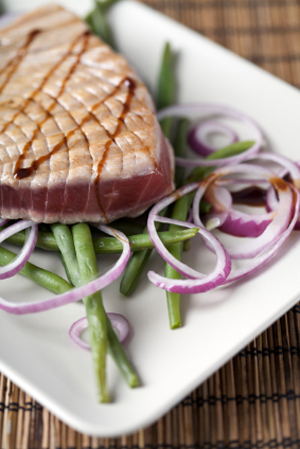 |
Complimentary to both sweet and savory foods, saba can be drizzled over just about anything. Photo by Alberto Gagna | IST.
|
| WHAT IT IS: A sweet cooking and garnishing syrup from ancient Rome: the father of balsamic vinegar. |
| WHY IT’S DIFFERENT: It isn’t made from wine, so it doesn’t have the acidity of a vinegar product. |
WHY WE LOVE IT: Another easy way to add exciting flavor to just about any dish, sweet or savory. |
| WHERE TO BUY IT: See products below. |
|
|
 |
 Saba, Sapa Or Vin Cotto: Balsamic Vinegar’s Dad Saba, Sapa Or Vin Cotto: Balsamic Vinegar’s Dad
CAPSULE REPORT: Saba was a favorite condiment in ancient Rome, for adding sweetness to recipes.*
*Crystallized sugar was created in India around the fifth century C.E., but was not affordable in Europe for another ten centuries.
The predecessor of balsamic vinegar, which overtook its parent in popularity, it’s time that we rediscovered saba.
Sapa was the original Roman name. Its contemporary regional names in Italy include saba (in Sardinia), mosto d’uva cotto (in Emilia Romagna) and vin cotto (in Sicily). Balsamic vinegar is a relative newcomer, invented in the 11th century. (It is speculated that balsamic came about by aging saba in vinegar barrels - making saba the father of balsalmic vinegar.)
So what is this saba/sapa/vin cotto/mosto d’uva cotto?
It is a condiment made from boiled grape must,† the unfermented juice from pressed grapes. You can’t call it a vinegar, because it isn’t made by fermenting grapes into wine. Each region makes its product from its own blend of local grapes.
†Vinum mustum, Latin for “young wine,” is freshly pressed fruit juice that contains the skins, seeds and stems of the fruit. The solid portion of the must is called pomace, comprising up to 23% of the total weight of the must. Making must is the first step in wine making. Because of its high glucose content, typically from 10% to 15%, can also be used as a sweetener. Must is not to be confused with grape juice, which is filtered and pasteurized.
The must is slowly reduced for 24 hours until it reaches a syrupy texture; then aged in wooden barrels for up to a year. What emerges is a thick, sweet cooking syrup for savory and sweet foods.
Watch out when you see terms like “balsamic saba.” There are too many people hawking their saba as balsamic vinegar—“the original balsamic vinegar.” Balsamic is a vinegar made with must. There is no vinegar in saba, just must (fresh grape juice). While “vin cotto” means cooked wine, it contains no alcohol.
What can you do with saba? What can’t you do with it! Join us on the the next page. Before you click away, take a peek at the article index below.
|